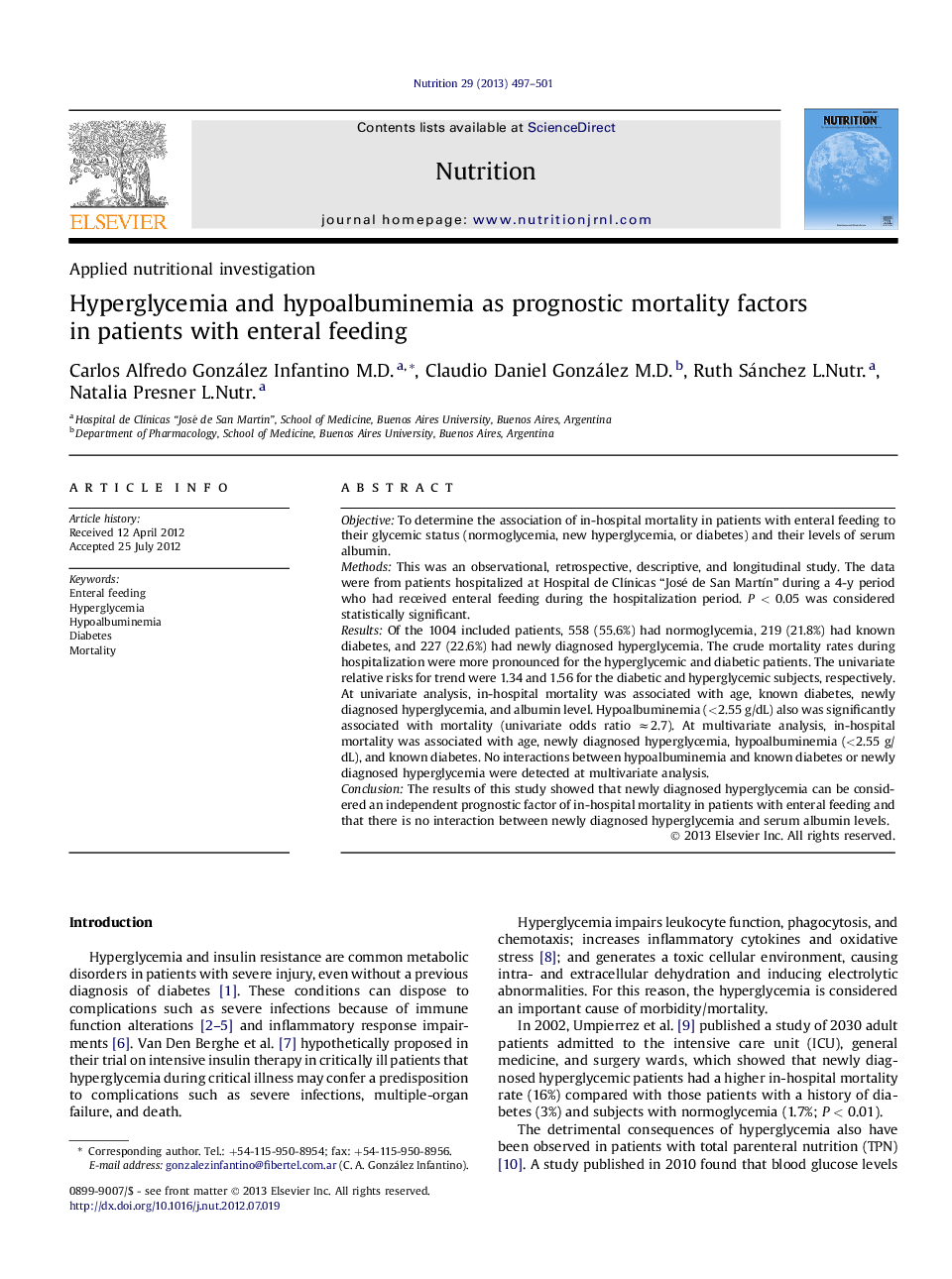| Article ID | Journal | Published Year | Pages | File Type |
|---|---|---|---|---|
| 3276435 | Nutrition | 2013 | 5 Pages |
ObjectiveTo determine the association of in-hospital mortality in patients with enteral feeding to their glycemic status (normoglycemia, new hyperglycemia, or diabetes) and their levels of serum albumin.MethodsThis was an observational, retrospective, descriptive, and longitudinal study. The data were from patients hospitalized at Hospital de Clínicas “José de San Martín” during a 4-y period who had received enteral feeding during the hospitalization period. P < 0.05 was considered statistically significant.ResultsOf the 1004 included patients, 558 (55.6%) had normoglycemia, 219 (21.8%) had known diabetes, and 227 (22.6%) had newly diagnosed hyperglycemia. The crude mortality rates during hospitalization were more pronounced for the hyperglycemic and diabetic patients. The univariate relative risks for trend were 1.34 and 1.56 for the diabetic and hyperglycemic subjects, respectively. At univariate analysis, in-hospital mortality was associated with age, known diabetes, newly diagnosed hyperglycemia, and albumin level. Hypoalbuminemia (<2.55 g/dL) also was significantly associated with mortality (univariate odds ratio ≈2.7). At multivariate analysis, in-hospital mortality was associated with age, newly diagnosed hyperglycemia, hypoalbuminemia (<2.55 g/dL), and known diabetes. No interactions between hypoalbuminemia and known diabetes or newly diagnosed hyperglycemia were detected at multivariate analysis.ConclusionThe results of this study showed that newly diagnosed hyperglycemia can be considered an independent prognostic factor of in-hospital mortality in patients with enteral feeding and that there is no interaction between newly diagnosed hyperglycemia and serum albumin levels.
